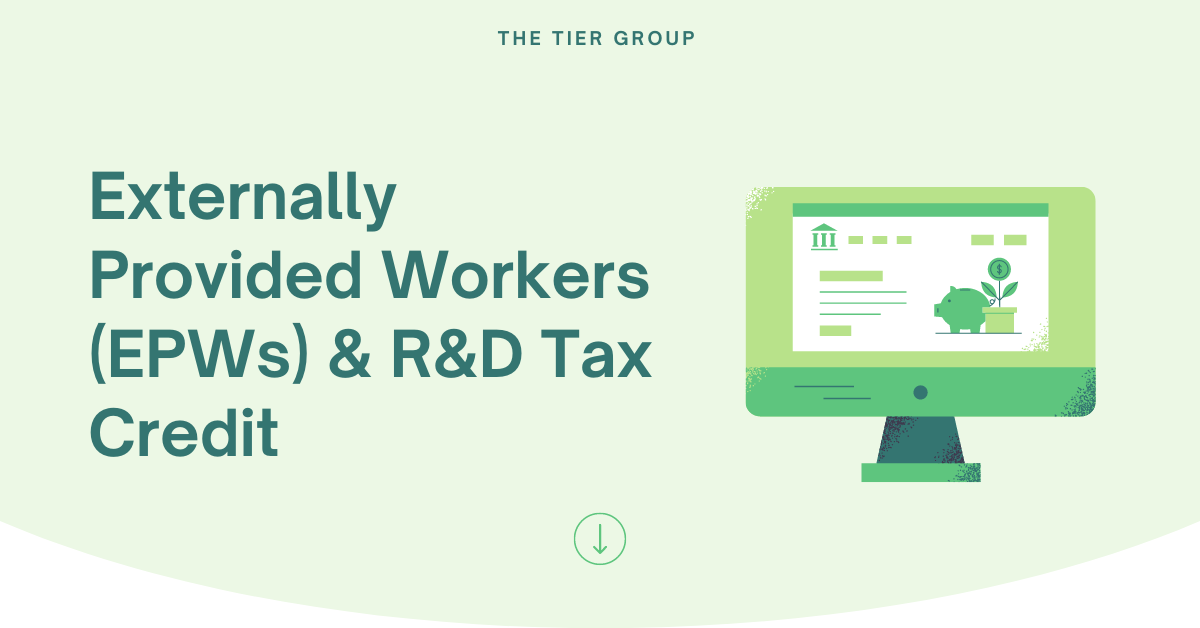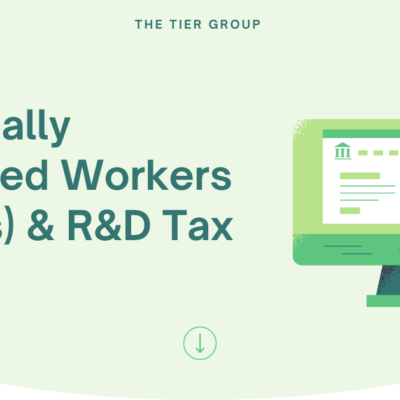
Externally Provided Workers (EPWs) & The R&D Tax Credit

Be it offline or online – each startup requires extensive labor. This indicates the increasing need for externally provided workers (EPWs) in all the growing fields.
Since they are a major source of running your business and generating revenues, it’s really important to understand them well. Having clarity on their overall role and working abilities tend to empower companies to wisely include them in their teams!
What Are EPWs Exactly?
EPWs, short for Externally Provided Workers, are basically workers fully hired for providing labor. But these are not regular employees. Companies here for temporary purposes only. Though employed for a make-shift arrangement, they still fit into the category of regular employees.
These workers also require different types of payment methods. This depends on the company’s varying requirements. Further, the third-party staff providers pay them for their work. First, an invoice is generated then based on the invoice contrary to the payrolls, they get paid.
Some of the really common examples of staff providers usually include:
- Staffing Agency: Here, the companies basically pay staffing agencies to find some reliable workers for them. The agency plays a major role in the entire setup by interviewing all the job seekers. Through this, the company gains immense trust over their employed workers and places them in appropriate positions.
- Personnel Service Company (PSC): Various contractors usually work for their clients through their own limited companies. These companies are none other than personnel service companies or PSCs. Such limited organizations are typically the ones that have a sole director owning most or all the shares.
- Connected company: Here, basically two companies are run by either an individual or a set of people. This influences their decision-making and the processes driven.
However, they further provide them to another group of companies in order to work on an R&D project. Even two group companies make a cross-charge in between them.
What Are Research and Development (R&D) Tax Credits?
Research and development credits are credits revolving around all research incomes. They are the ones that allow various qualified businesses to deduct the initial costs of all their research from their taxable incomes. Small businesses tend to use R&D credits and offset some portion of their payroll taxes.
Each business strongly demands innovation which further requires expensive research and development. In most cases, giving a boost to such changes comes up short, with no profit from investments, or requires different transformative phases before becoming quite profitable.
These expenses can discourage various businesses from putting money into R&D. The R&D tax reduction can be used as an incentive for businesses to proceed with their efforts. This could lead to various advancements in the industry.
Can You Claim R&D Tax Credits for Externally Provided Workers?
Under the unique SME Research and development tax reduction scheme, you can’t, for the most part, include everything of the company expenses for all the works undertaken by EPWs in your specific claim.
It has been found that just 65% of the entire payment can be utilized towards your overall R&D tax credit utilization. The other 35% helps represent the company’s outside overall revenue, set by HMRC.
But when you and the supplier get associated in some way – rules change a bit!
There is no 65% limitation at all. Apart from that, you can easily claim certain R&D tax reductions on either the money paid to the outside company or the genuine expense of labor to the staffing supplier.
Whichever one has a comparatively lower sum is the one utilized for your R&D tax reduction guarantee scheme. Each organization has some criteria for claiming R&D credits. Through this, they get the opportunity of claiming research and development credits on EPW costs!
Various types of established companies (or any SMEs) which use innovative work consumption credit (RDEC) are fully eligible for EPW costs. As in the SME Research and development tax reduction schemes, here just 65% of the installment can be utilized for the R&D tax credit calculation.
How are EPWs Different From Subcontractors?
Many times, people tend to consider these two terms almost the same, however, both are different! As mentioned above, externally provided workers are the temporary workers providing labor with some increased supervision. Not just this, they even direct and responsibly control the labor going into the business efficiently.
On the other side, subcontractors are people who majorly provide services rather than specified labor. A kind of subcontracted work tends to happen when you put in efforts to engage someone to carry out a service on your behalf. Since nothing is free, this exchange takes place through the use of money.
If seen and observed from the outside, an externally provided worker can easily seem to look like a normal employee. However, this person’s invoice is not done in the same way as done for other employees.
It is observed that different calculating methods are used for generating externally provided workers’ invoices. A staff provider pays EPWs via an invoice. However, permanent employees are hired on a salary basis.
The major key element for an EPW is the third-party staff. If there isn’t a third-party staff with the individual, there isn’t an externally provided worker. On the other hand, subcontractors don’t require such parties for their invoices. They usually work on a contract basis and mostly receive direct payments from the owner itself.
Wrapping Up
EPWs can be an asset to the company, especially for the ones who are struggling to keep up with their ever-growing demands. The research and development field is often extremely vast. You need to put in significant efforts to reach a conclusion in this field. This is precisely where EPWs help you!
The third-party staff also takes away the additional burden of maintaining their payment cycles. Thus, you can reap the benefits of having a full-time worker without having to keep them on a dedicated payroll.


